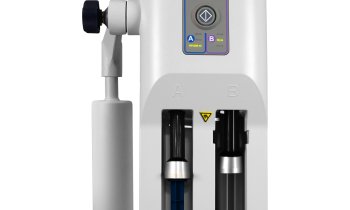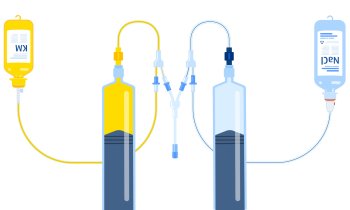MR probes for molecular imaging
By Silvio Aime, of the Department of Chemistry & Molecular Imaging Centre, University of Torino, Italy
Molecular imaging aims at the in vivo quantitative visualisation of molecules and molecular events that occur at cellular level. The potential towards clinical translation is huge, because the same modalities used in medical imaging are used in molecular imaging investigations.

Traditionally, medical imaging was a tool for non-invasive mapping of anatomy and for the detection and localisation of a disease process. The advent of molecular imaging-based protocols will allow the detection of the onset of diseases at an early stage, well before the biochemical abnormalities result in change in the anatomical structures. Moreover, it will offer efficient methods to monitor the effect of therapeutic treatments.
Molecular imaging agents provide the crucial link between the specificity of the target and the quantitative visualisation of its in vivo distribution.
The possibility of carrying out molecular imaging protocols by means of MRI is very attractive for the superb anatomical resolution that is attainable by this technique. However, MRI suffers from an intrinsic insensitivity with respect to the competing imaging modalities that has to be overcome by designing suitable amplification procedures based on the development of reporting units endowed with an enhanced sensitivity and on the identification of efficient routes of accumulation of the imaging probes at the sites of interest. MRI definitively suffers when compared with nuclear medicine and optical molecular imaging techniques for the set-up of molecular imaging protocols, as its low sensitivity implies the use of 107-109 imaging reporting units per cell, when few are necessary for the latter modalities. Now, the need to target molecules that are present at very low concentration requires the development of novel classes of contrast agents, characterised by enhanced contrasting ability and improved targeting capabilities. Efficient targeting procedures for cellular labelling and recognition of epitopes characterising important pathologies are therefore as important as the task of developing more efficient image contrasting units.
The possibility of delivering a high number of imaging agents to the target of interest appears the solution of choice, to overcome the drawback associated with the low sensitivity of the MRI approach. The use of metal-based particles entered the armoury of MRI contrast agents very early, with the Superparamagnetic Iron Oxides’ family, which are still among the most sensitive systems. Currently, much attention is devoted to the design and use of self-assembled systems based on lipophilic molecules, where the imaging reporters are invariably represented by highly stable paramagnetic lanthanide (III) complexes. In general, whatever the paramagnetic lanthanide (III) ion is, the particles act as T2-susceptibility agents whose contrasting abilities increase by increasing the magnetic field strength. In the case of Gd(III) complexes, the systems act mainly as T1-relaxation agents whose efficiency is eventually enhanced by the long re-orientation time of supramolecular aggregates. In addition, to tackle sensitivity issues, such systems may also be designed in order to become responsive to a specific physical or bio-chemical parameter of the micro-environment in which they distribute. Moreover, nano-sized carriers for Gd-complexes based on naturally occurring systems (e.g. lipoproteins) have also been considered for targeting specific epitopes on diseased cells.
Finally, the structure of liposomes has been exploited to generate a novel class of CEST agents (CEST= Chemical Exchange Saturation Transfer) dubbed LipoCEST. Such systems are characterised by containing a shifted resonance for the water molecules entrapped in the liposomial cavity, which can be selectively irradiated in order to transfer saturated magnetisation to the ‘bulk’ water signal. In this way, one deals with frequency-encoded MRI contrast agents that open the interesting perspective of detecting more than one agent in the same anatomical region. All together, the achievements made in the use of these nano-carriers in MRI applications also represent the basis for the development of the field of imaging of drug delivery processes. The superb anatomical resolution provided by MR images, together with the availability of targeting and responsive agents, will allow the clinician to pursue the task of visualising the delivery of drugs at the diseased region and, even more important, to monitor the therapeutic output in real time.
Finally, much is expected from the use of hyperpolarised molecules, because it has been shown that hyperpolarised C13-pyruvate can act as an efficient metabolic reporter for cancer cells in prostate tumour bearing mice.
01.03.2008











